
This is free.
A versatile traction-assist option for small-scale harvesting on steep slopes
Jack Palmer and John Schrider, New Zealand Tree Grower February 2023.
Large-scale harvesting operations now routinely use winch-assist or traction-assist systems to increase productivity and safety on steep slopes. The costs associated with incorporating specialist machinery such as these winch-assist or traction-assist machines can be difficult to justify in woodlot harvesting where productivity is relatively low.
Northland contractor Peter Davies-Colley is using a small, versatile and low cost traction-assist machine, a T-winch 10.2, as part of his mechanised woodlot harvesting system. Forme Consulting Group Ltd recently monitored this in action and came to some favourable conclusions about its suitability for mechanised small-scale harvesting crews.This article is the fourth in a series reviewing small-scale harvesting equipment.
Tethered machines
Harvesting small forest blocks which have difficult access and steep slopes can be challenging and cost prohibitive. Woodlot owners risk receiving little or no return for their forest investment. Finding a suitable, cost-effective harvesting system in these situations can be difficult for forest owners and harvesting contractors alike.
The use of tethered machines has increased significantly in large-scale forest harvesting over the past five or so years in New Zealand and overseas.
This is partly a result of the rapid move to fully mechanised harvesting, where ‘no boots on the ground, no hands on the log’ prevails.Winch and traction-assist technology allows ground-based and hauler-based harvesting contractors to be able to harvest trees safely in fully mechanised operations on slopes which would previously have been harvested using a cable hauler combined with manual felling.
The technology involves tethering the machine on the slope to an anchored machine at the top of the slope using a wire rope.The rope is extended out or hauled in by a rotating drum driven by the winch-or traction- assist machine.
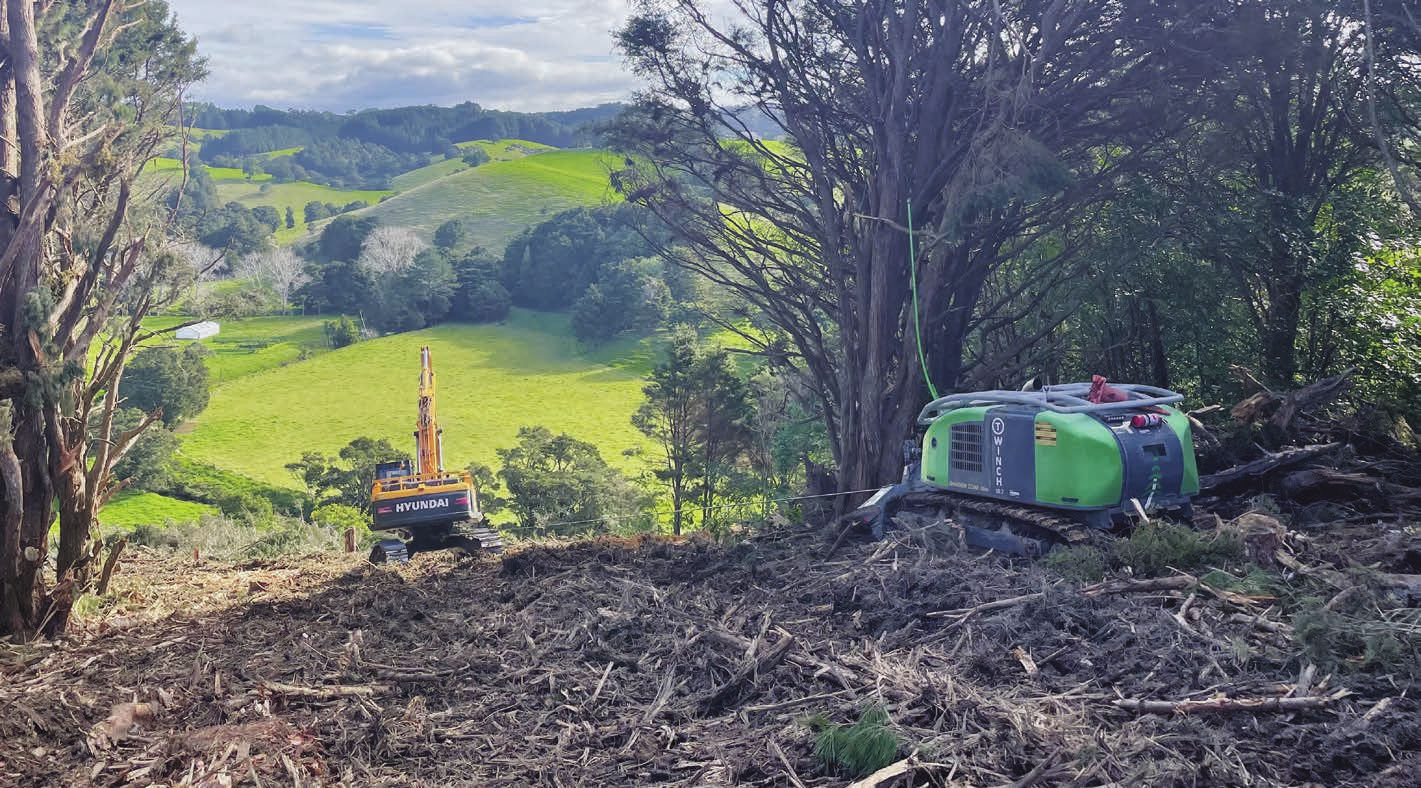
Safety
Operating safely is the main concern around felling machines working on steep slopes. Early systems used a wire rope attached to the felling machine which
provided an added level of safety as the machine moved up and down the slope. As this technique gained popularity, the benefits of having machines attached to a winch of some description became apparent and ideas
around winch-assist and traction-assist technology began to develop.
Winch-assist machines are designed to winch the attached machine up and down the slope and be able to hold the machine against gravitational forces, in other words stop it sliding down the hill.Traction-assist is
not designed to hold the attached machine, but instead to aid stability and traction while the machine on the felling face still moves under its own power.The added security of an anchored tether allows machines and operators to travel and work on steeper slopes where they would be unable to manoeuvre safely or efficiently without the help of the tether.
The Davis-Colley system
Northland contractor Peter Davies-Colley’s woodlot harvesting system featured in the May 2021 Tree Grower. Peter continues to develop options for relatively low cost, mechanised woodlot harvesting and low-impact log extraction for woodlot owners.
Forme Consulting Group’s Jack Palmer and John Schrider went to observe and monitor the T-winch 10.2 operating in a small woodlot east of Whangarei.This was over three days in late May 2022 in a range of weather conditions.The operation involved a felling machine, two excavator loaders and three forwarding trucks.This system used shovelling and forwarding extraction to reduce the amount of earthworks required to harvest the block, reducing environmental risk and capital investment for the land owner.
The T-winch was used by the felling machine and shovelling excavator. It can be attached to a standard excavator undercarriage.The felling machine had been modified by adding a drawbar to allow for increased manoeuvrability when tethered, a common modification.
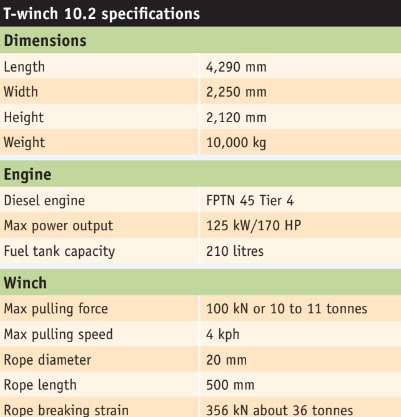
T-winch specifications
The T-winch comes in two models, the 10.2 and the larger 30.2.The latter has been designed to hold machines on the hill with increased rope diameter, pulling force and line speed for heavy duty high production winch- assist operation.The smaller T-winch 10.2 traction-assist machine is potentially more economically feasible for smaller logging crews while providing versatility which suits small woodlot harvesting.
The T-winch 10.2 has an auto-tensioning system which provides a constant force at the pre-set tension level in half tonne increments up to 10 tonnes maximum pulling force. By monitoring the tension many times a second, the T-winch spools out or winds in rope to remain at the desired amount of assistance.
The table on the next page provides an indication of daily operating costs of a T-winch 10.2 under two productivity options.The first is when it is in use for an average of three hours a day, and the second option shows the costs when in use for a full six-hour day. It is important to note that forestry equipment costs rely on individual and specific operator preferences and circumstances. As a result costing methods can provide a wide range of figures.
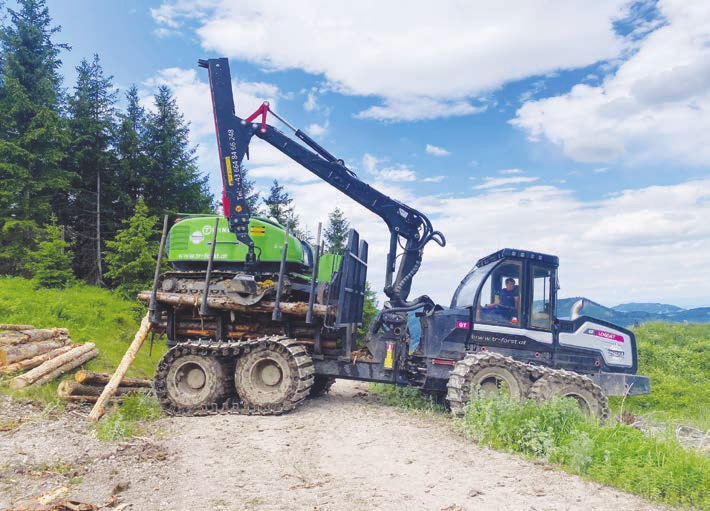
Production benefits
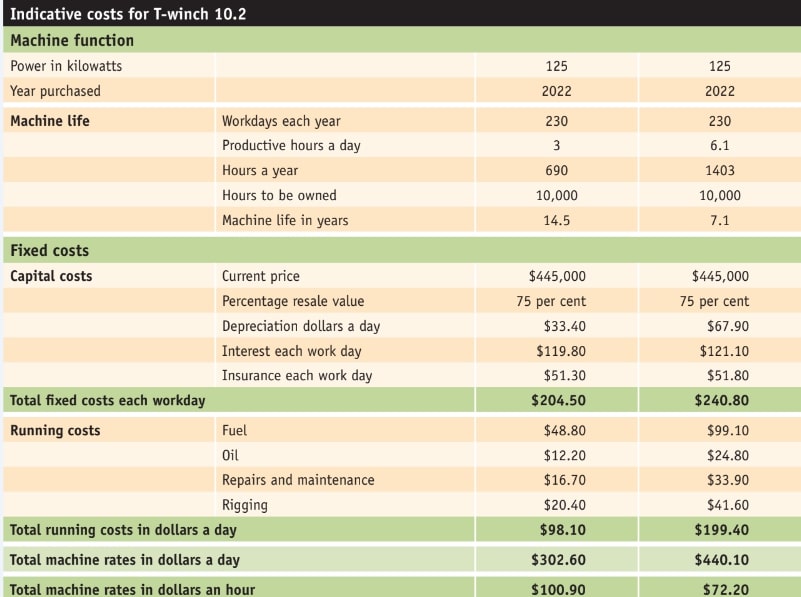
Over the three days of observation, we were very impressed with the performance of the T-winch as part of a well-planned and managed harvesting system. Some of the production benefits noted include the following.
- Fuel consumption is low compared to similar winch- based machines, averaging only five to six litres an hour, verified by monitoring fuel tank levels over the three days.
- Fuel consumption by tethered machines is reduced due to traction assistance on slopes.While hard to quantify, the decreased slipping or traction loss of machines while manoeuvring around the slope were obvious.
- The T-winch is a small machine with a small footprint which allows placement options such as mid-slope roading and small landings.
- Increased safety when working on slopes.The T-winch does not hold the machine on the slope in place, but the rope means a more stable placement and manoeuvring of the machine which results in increased operator safety and reduced fatigue.
- Automated rope tensioning.The T-winch measures tension many times a second to ensure the rope tension is kept constant as set by the operator.This reduces the likelihood of shock loading on the rope.
- Decreased track slipping on steep faces due to the traction assist reduces scouring and the likelihood of water channelling and eroding the soil after heavy rain.
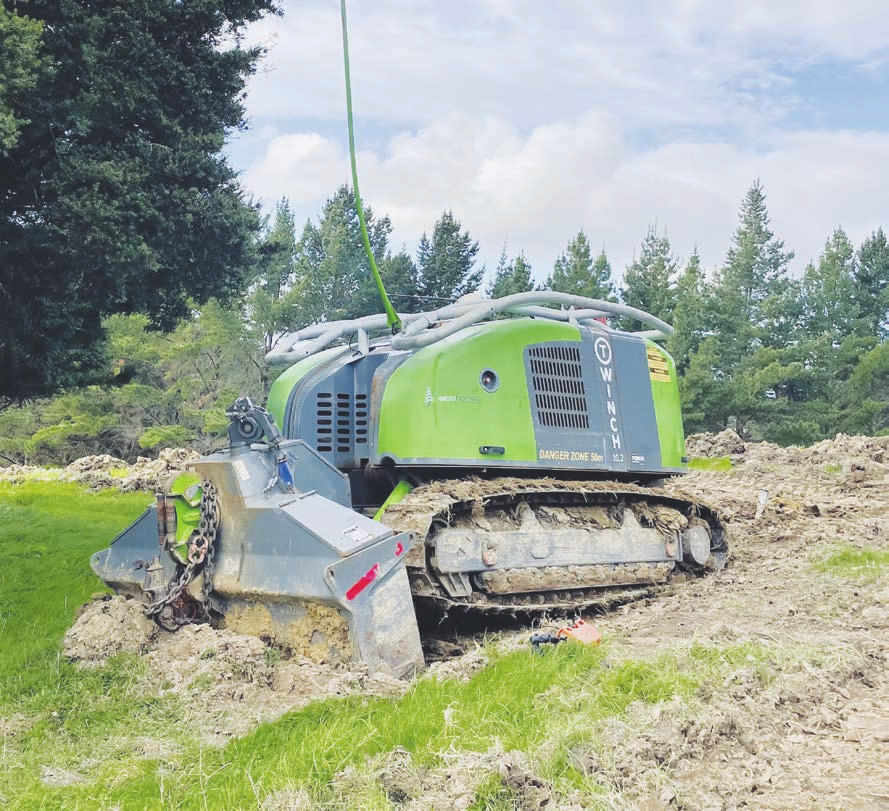
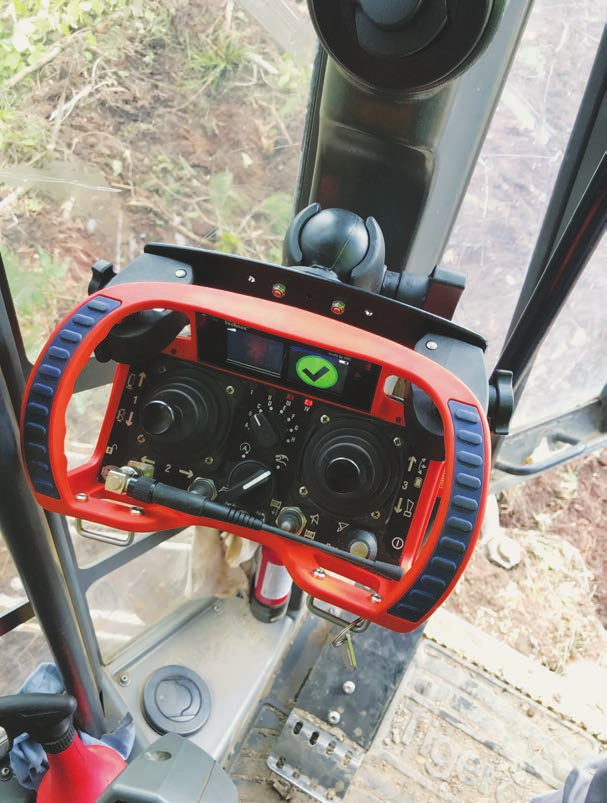
Versatility
One of the clear benefits of a T-winch is its versatility. The machine is very manoeuvrable due to its small footprint, which allows it to travel along existing narrow farm tracks or ridges. It can also winch itself into places which are difficult to access. It can be transported on an eight-wheeled transporter due to its compact size and weight, or even transported on a forwarder within forest. It can use its own blade to flatten a small area for secure winching.
Two T-winches can operate together, synchronised via a remote control to provide 20 tonnes of pulling power through a two-rope system.The total purchase cost of two T-winches is similar to that of a single larger machine but two machines provide versatility, as they can be operated independently or together as a synchronised system.
The T-winch rope is lighter than conventional winch ropes so can be manhandled up and down slopes. It is easy to switch between machines, as there is no integration required between the winch and the tethered machine. Only the remote control needs to be swapped.
Few constraints were observed, apart from the lower allowable rope tension loads compared with other winch machines on the market.The T-winch is marketed as traction-assist rather than a winch-assist machine.The main operating problems may come down to the tendency for operators to misuse the equipment, overloading the rope in ways it is not designed for.
Conclusions
The T-winch 10.2 is a cheaper and smaller alternative to the large winch-assist machines commonly operating in forests.The relatively low purchase price, just under half a million dollars, makes it a potentially viable addition for the lower production logging crews often employed to harvest small woodlots.
Our observations confirmed that skilful use of the winch resulted in increased productivity, safety and better environmental results because there was less slippage and skidding on the felling face. Using a T-winch allowed for careful planning, felling and extraction of trees on steep slopes which otherwise would not have been safely accessible by conventional ground-based logging machines.
The need for traction-assist and winch-assist machinery has increased markedly as ground based and hauler crews become increasingly mechanised. Small- scale harvesting contractors need versatile and cost- effective harvesting machinery.The relatively low up- front cost, resultant increased productivity and potential for cost savings elsewhere in the operation, make it a very good option for small-scale crews. Large-scale crews may also find a cost-effective role for this machine in some circumstances.
The ready assistance and co-operation of Peter Davies-Colley and his harvesting team is gratefully acknowledged. A full technical report is available on the Forest Growers Research website https://fgr.nzJack Palmer and John Schrider are registered forestry consultants, working for Forme Consulting Group Ltd.

 Farm Forestry New Zealand
Farm Forestry New Zealand

